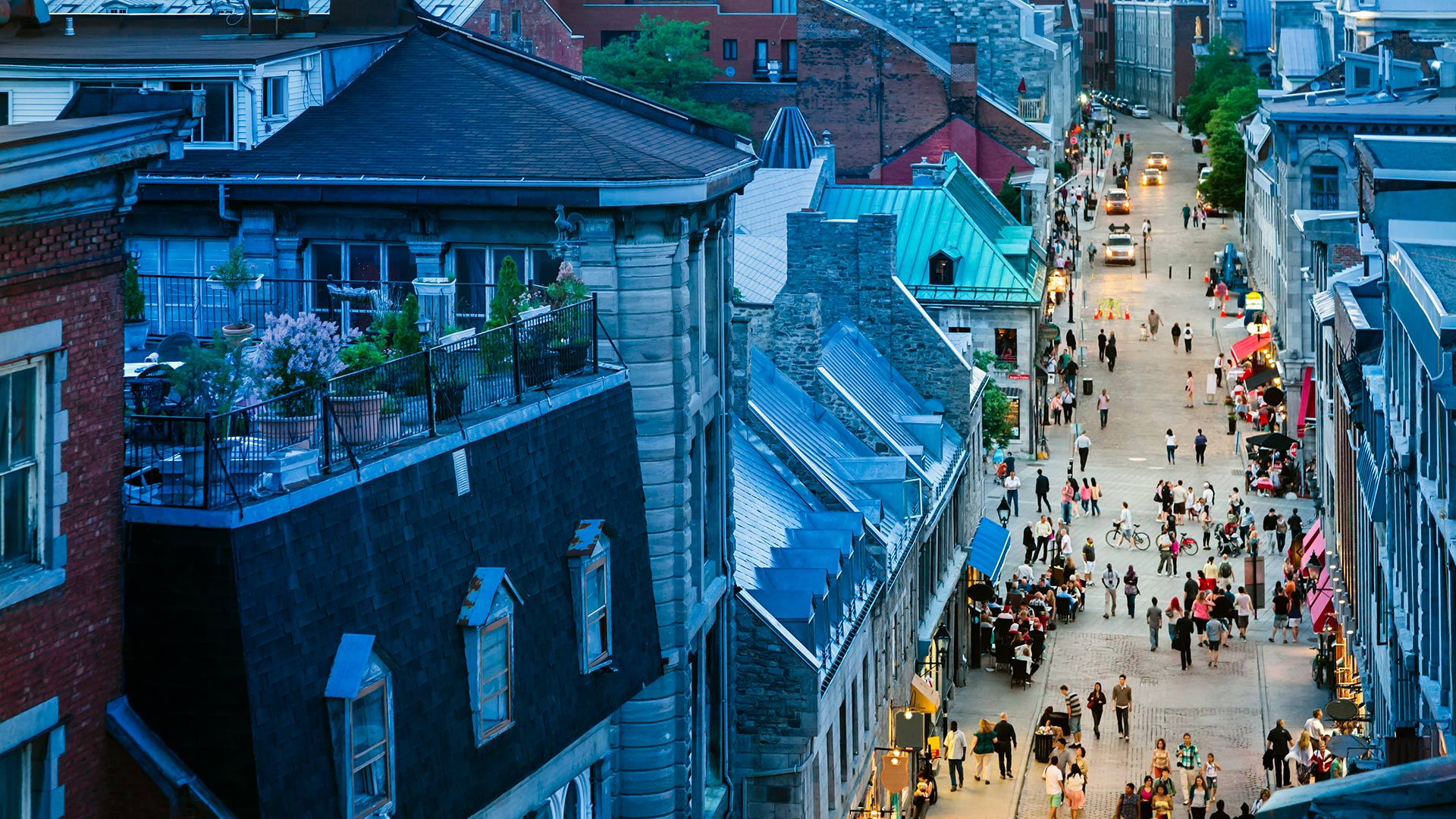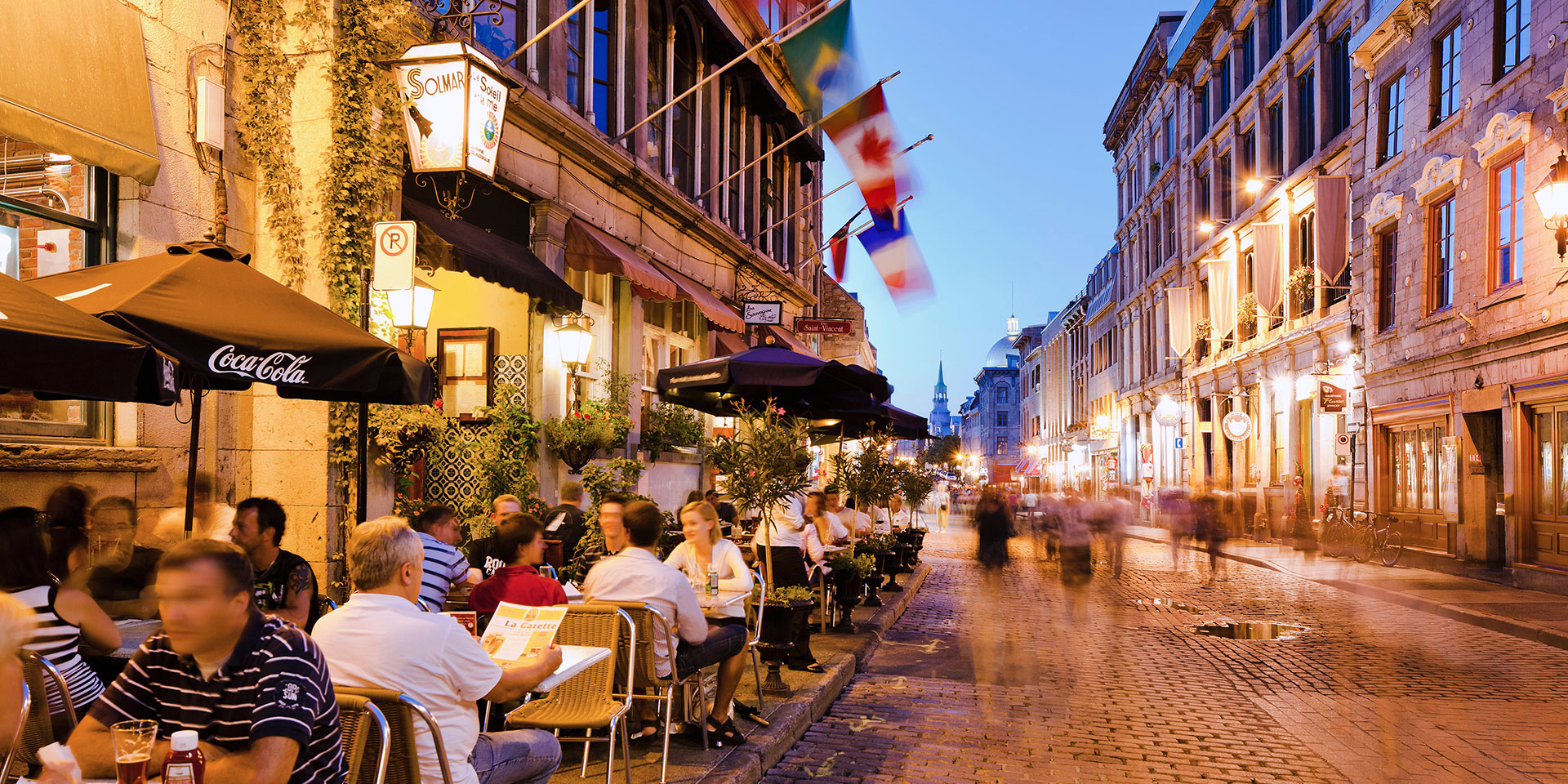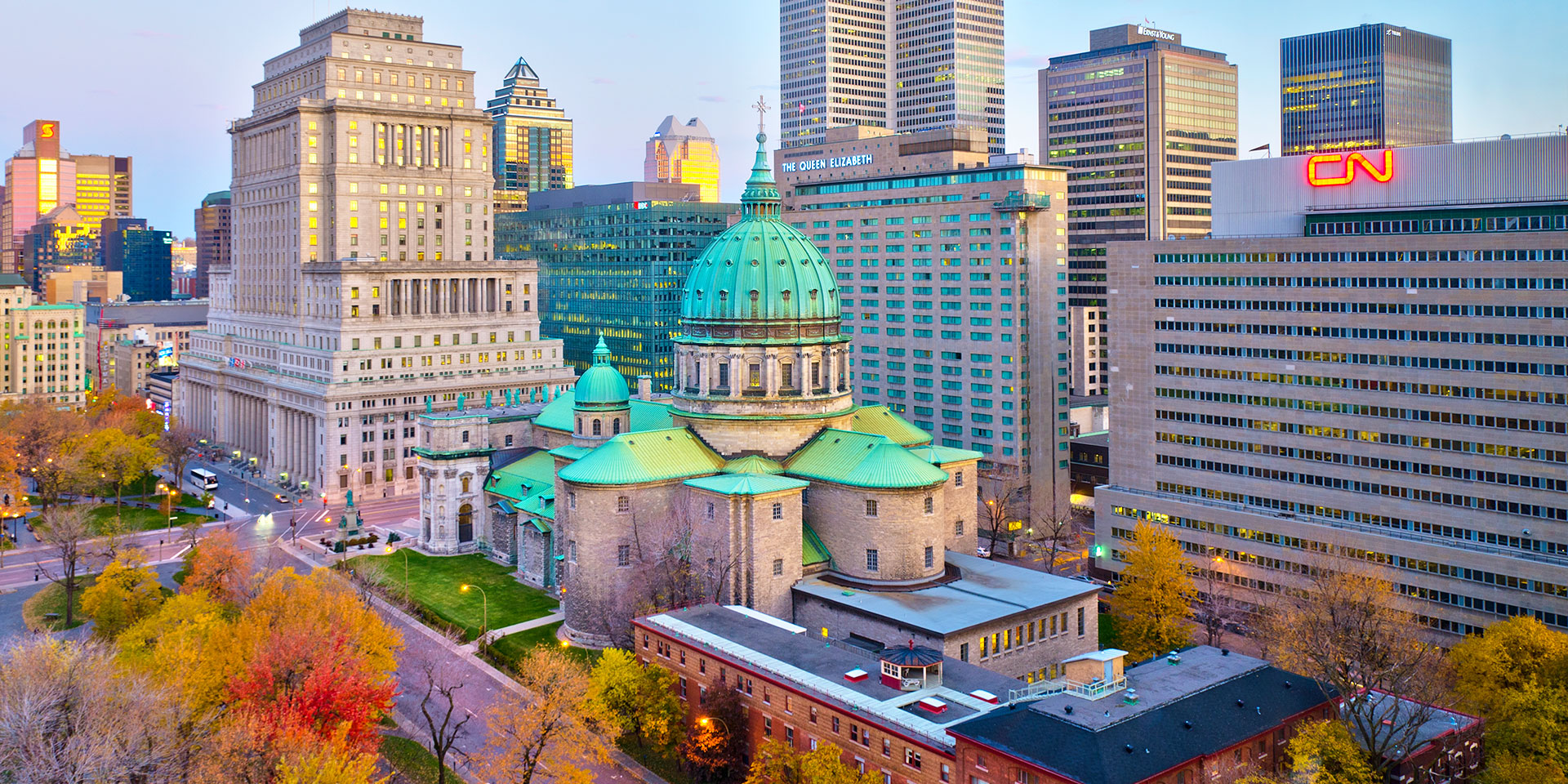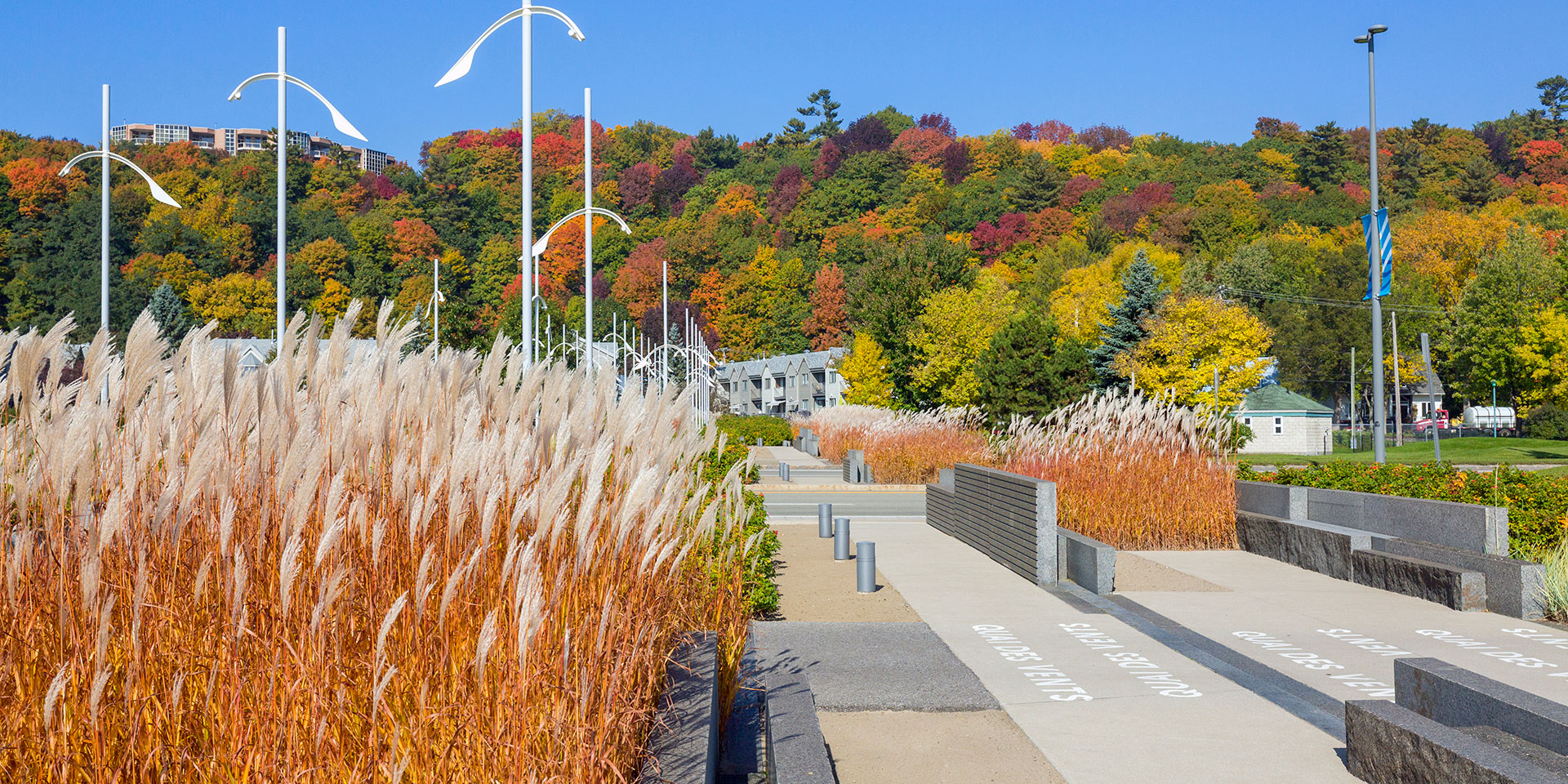
The Chemin du Roy — a historic highway along the Saint Lawrence River — is perfect for your autumn road trip. (Photo: Getty Images)
MontrealFall for Canada’s Foliage on a Colorful Road Trip from Montreal to Quebec City
By Daniel BaylisQuebec is renowned for autumn colors. Starting in late September and lasting until mid November, the leaves — primarily from maple trees — turn vibrant shades of burgundy, sunflower yellow and burnt orange.
One way to experience autumn’s shades is by embarking upon a road trip between the province’s two main metropolises: Montreal and Quebec City. Both situated on the banks of the Saint Lawrence River, the cities are surprisingly close to each other, making a trip feasible in one day.
The region has a history of people traveling along the riverway. While Saint Lawrence Iroquoians navigated the region primarily by water, early European settlers constructed roads that enabled stagecoaches and oxen-pulled carts to transfer people, farm produce, letters and other goods. For travelers in the 1700s, it took between four and six days to travel between Quebec and Montreal.
A semblance of a village was located every 10 miles, where a relay station was maintained by a local postmaster. Eventually, steamboats and trains became preferred methods to travel, but the roads remained.
Flash forward to today, the Chemin du Roy — a historic highway along the northern shore of the Saint Lawrence River — offers an alternative option for those seeking bucolic scenery between Montreal and Quebec City. Translated as “King’s Road” in English, the leisurely, 170-mile motorway traces the curves of the river and is especially scenic in autumn.
The following locations along the route offer opportunities to not only see fall foliage, but to bear witness to the cradle of French North America, to sample flavors and to meet locals. The itinerary is presented for those driving from Montreal to Quebec City but can easily be reversed.
Bon voyage!
Get to the Top
While in Montreal, Mount Royal Park — a forested jewel rising above downtown — is the best location to get a sense of the seasonal colors. The park was designed by Frederick Law Olmsted, who also envisioned New York’s Central Park.
Located at the top, the Kondiaronk Belvedere makes for a perfect vantage point to see the city, but multiple trails across the entire park allow intimate access to a spectrum of foliage.
Mill About
In Repentigny, Moulin Grenier is a historical windmill (which dates back to 1820) and makes the perfect first stop on the tour. While the mill no longer grinds wheat, all of its original mechanisms are still in place. Admission is free, and guided tours are available.
Practice Your Sommelier Skills
In Quebec’s fastest-growing wine region, local winery Vignoble CARONE Wines harvests such varietals as sangiovese, nebbiolo, and Quebec’s first pinot noir wine.
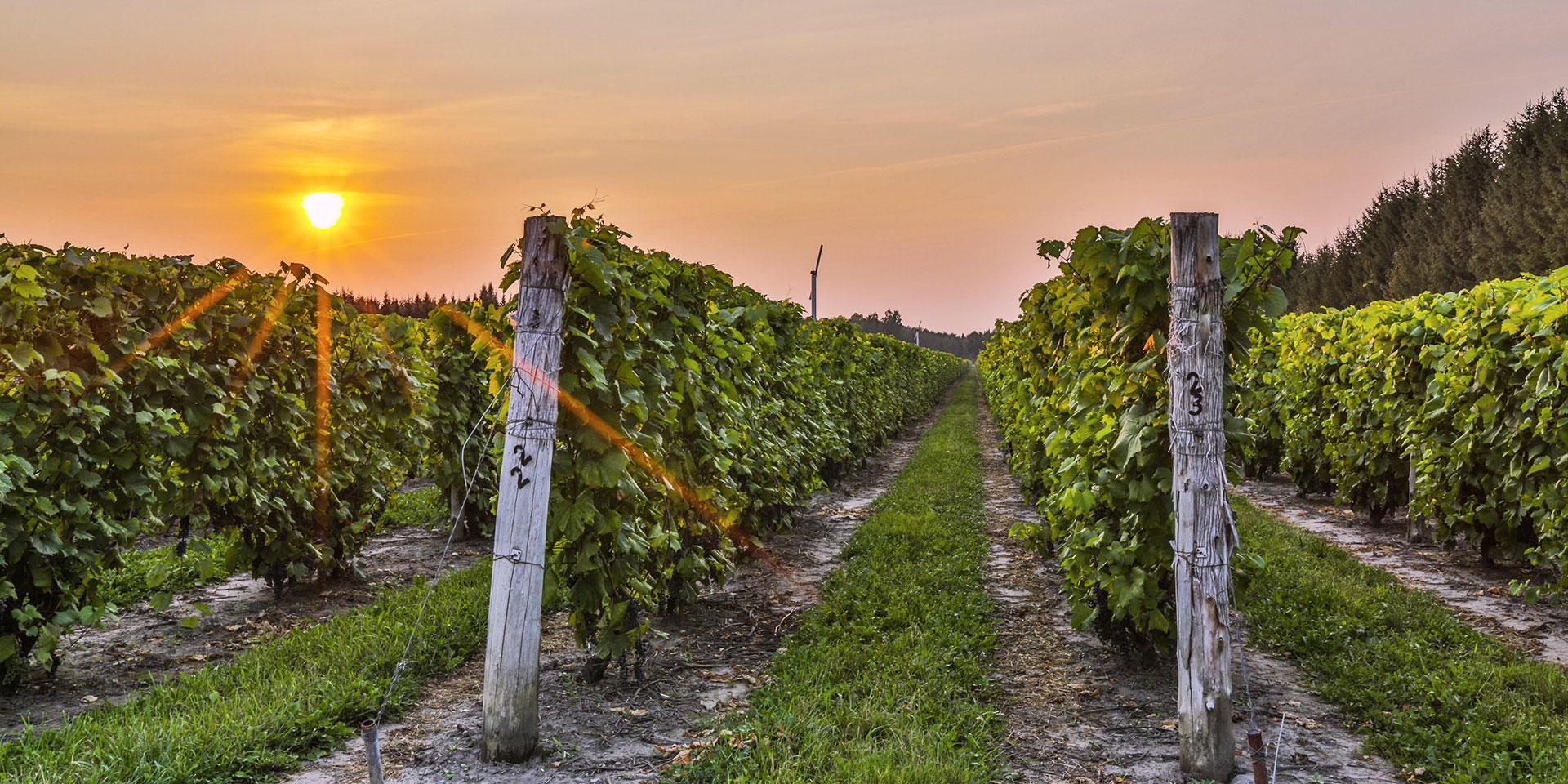
Owner Anthony Carone started making wine when he was five years old and has subsequently become the first winemaker to have won international medals for his 100-percent Quebec-grown red wines.
Nibble on Locally Made Cheese
Artisanal cheese shop Fromagerie Baluchon offers the famous organic Baluchon cheese, other fine regional cheeses, and a host of handmade products. Pair the cheese with a crusty baguette, toss in some Quebec-grown apples and you have the fixings for a perfect locally produced, late-afternoon picnic.
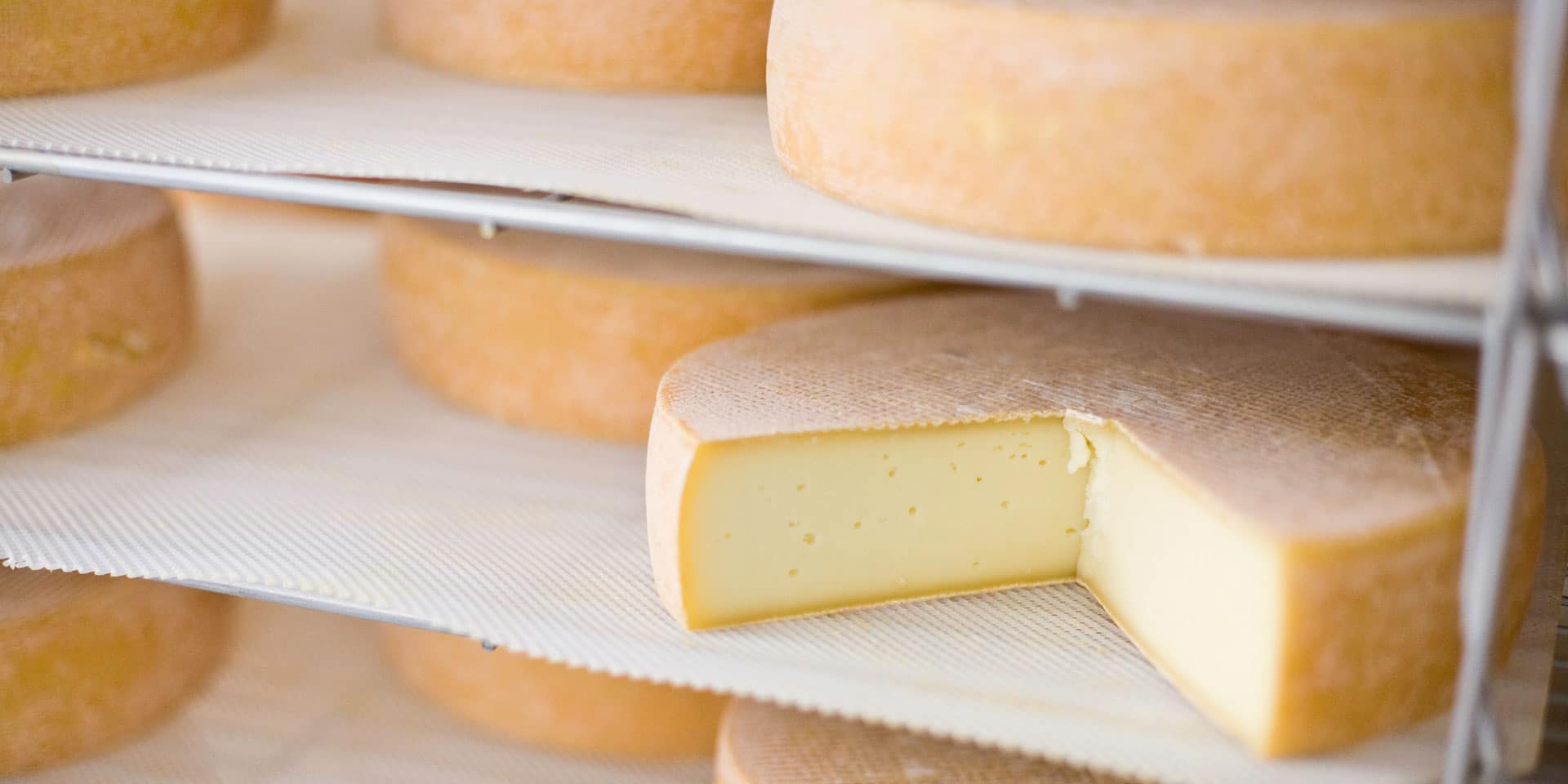
Roam by the River
Shortly before entering Quebec City, Parc du Domaine-des-Retraités is a small green space that offers a short but handsome walking trail framed by fall colors. It’s also a perfect location to snap photographs of the iconic Pierre-Laporte Bridge.
Tour an Agricultural Island
On the eastern outskirts of Quebec City, Ile d’Orleans is referred to as the “garden of Quebec.” Essentially rural, the 21-mile island is famous for growing strawberries, apples and potatoes and producing wine. The island is drenched in history, a microcosm of traditional Quebec culture, and is known as “the birthplace of francophones in North America.” Colors galore!





